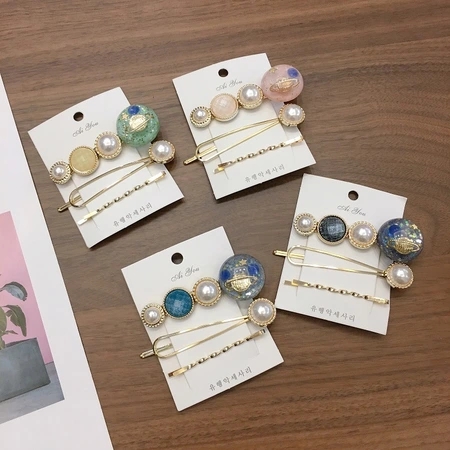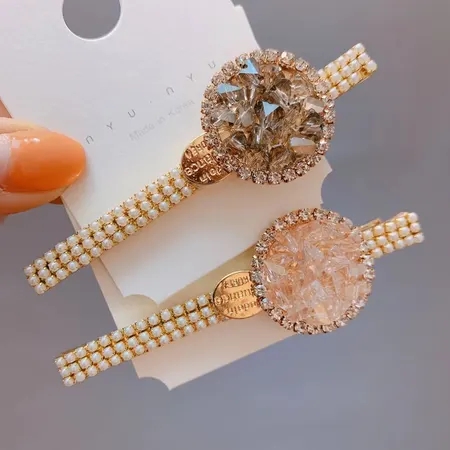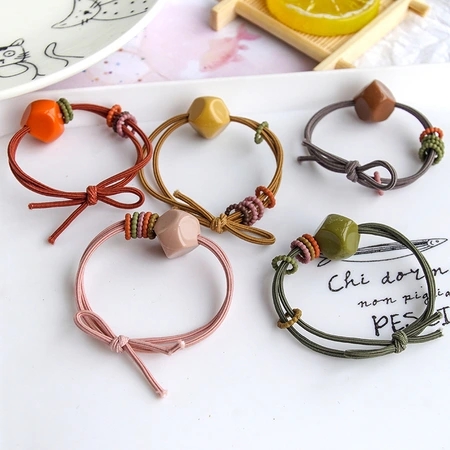How to choose a hairpin?
To choose a hairpin, consider the following factors:
1. Material: Choose a material that is durable and easy to clean. Common materials used for hairpins include plastic, metal, and wood.
2. Design: Consider the design of the hairpin when choosing one. Some designs are more versatile than others, so it’s important to choose a style that will work well with your hairstyle.
3. Size: Make sure the size of the hairpin matches the thickness or length of your hair. If you have short hair, a smaller hairpin may be necessary.
4. Style: Think about the look you want to achieve with the hairpin. Do you want it to add volume or shape to your hair? Or do you want something simple and understated?
5. Brand reputation: Look for brands that are known for producing high-quality hairpins. This can help ensure that you get a product that meets your expectations.
6. Price: Keep in mind that not all hairpins are created equal, even if they are made from similar materials. Look for products that offer value for money and fit within your budget constraints

How to choose a hairpin?

How to choose a hairpin?

How to choose a hairpin?
A hairpin is a type of curve or loop in a wire, cable, or rope that resembles the shape of a pinecone. It is often used to join two wires together or to create a decorative element on its own.
The term “hairpin” comes from the fact that it was once believed that this type of curve could be formed by twisting hairs or other soft materials around each other until they became stuck together and eventually twisted into a cone-shaped structure. However, modern scientific studies have shown that hairpins are actually formed through processes such as plastic deformation or creep, rather than being created by simple twisting.
In addition to their use in electrical wiring, hairpins can also be found in many everyday objects, such as jewelry, clothing accessories, and even garden ornaments. They add a unique and decorative touch to these items while also providing structural support or reinforcement where needed.
A hairpin is a type of coiled spring that has two curved arms joined at their midpoint. It is often used in the design of mechanical devices, such as clocks and watches, to provide tension and support for delicate mechanisms.
The name “hairpin” comes from its appearance: it resembles a long, thin coil with two spiraling arms. The hairpin shape allows for efficient use of space, since each arm can be wound onto itself to form an even more compact coil than would be possible with a straight or circular wire.
In addition to its practical uses, hairpins have also been used in art and fashion as decorative elements. Hair pins are typically made of metal, such as brass or silver, and are available in a wide range of styles and designs. They may be shaped like flowers, leaves, or other natural motifs, or they may feature geometric patterns or abstract shapes.
A hairpin is a type of jewelry that consists of two twisted or braided pieces of metal, usually gold. The term “hairpin” comes from the fact that it was once believed that this type of jewelry was worn by women to keep their long hair in place.
There are many different styles and designs of hairpins, but they all share certain common features. Hairpins are typically made with thin wire or metal strips that are twisted together to create the shape of the pin. They can be shaped into various shapes such as hearts, flowers, or other decorative motifs.
Hairpins have been used for centuries as a way to adorn hair and hold it up during formal occasions. In ancient Egypt, for example, hairpins were often made with precious metals like gold and silver, and were used to decorate elaborate hairstyles. Today, hairpins continue to be popular accessories for both men and women, and are available in a wide range of styles and materials.
Overall, hairpins are simple yet versatile components that play important roles in many different types of machinery and everyday objects.